Exclusive: Inside the complex whirl of Patricia Kopatchinskaja
mainAnthea Kreston’s diary:
I saw Patricia Kopatchinskaja live for the first time two years ago, when she played the Sibelius with Konzerthaus Orchestra in Berlin. I was, of course, familiar with her work, and eager to get a taste of the living, breathing PatKop. She is beloved by audiences and musicians, but she (like many strong personalities in all fields) also elicits a passionate negative response by a vocal minority. I was looking forward to working with her – to see what she is like in rehearsal, in real life.
My own reactions to her Sibelius in Berlin were mixed. In the end, she had my support, even though many of her musical decisions were diametrically opposed to my instincts and training. She was so quirky, and her mannerisms so jagged, I wondered to myself if she was being true to herself, and true to us.
And so – to give the week’s work at the Saint Paul Chamber Orchestra my best foot forward, I decided to try to understand her by studying her background, and her influences. We all, as musicians, see and feel our music through different lenses – our childhood soundscapes, our teachers, the music that our parents played in the car. What did she grow up to? If I could understand her perspective, I think I could more easily hop on the PatKop bus. The week before, we had worked with early music specialist Richard Egarr, who grew up on 50’s crooners. I downloaded a bunch of Rosemary Clooney that week – and loved the way he opened up the Locke and Purcell to a kind-of singalong friendliness. Now – to understand Patricia.
She was born in Chisinau, in the Moldavian Soviet Socialist Republic (now Moldova). Her parents are musicians, they played in the State Folk Ensemble of Moldova – dad is a cimbalom player and mom is a violinist – and she grew up with her grandparents while her parents were on tour in the former Eastern Bloc. She began to play at age 6, and moving to Vienna at age 12, she later studied composition and violin at University in Vienna and Bern. Patricia herself is classically trained, but those sounds she creates – those are not sounds from the classical world – those are from somewhere else.
I first listened to her 2010 album, Rapsodia, which is thick with fantasy and the music of her native land. It is a family album – mom and dad play throughout – and sounds of birds, nature, human cries and sighs burst through my speakers. Rhythms and tempi are foot-stomping and slide forward, come to abrupt halts. Patricia doesn’t believe that music has to be beautiful – perhaps this is one of the things that makes her controversial – she seems to believe that music is a representation of the realities of life – from fantasy to brutality. And so it challenges us, offends us, then caresses us.
Next I watched several YouTube videos with her duo partner Mihaela Ursuleasa (who is also on Rapsodia). She and Patricia had a magical musical synergy – both were wild girls – young mothers – fearless in their spontaneity and exploration. They broke through so many barriers together, and seemed to laugh and twirl with an abandon rarely seen. When, in 2012, Ursuleasa was found dead in her apartment in Vienna, of a brain aneurysm at age 33, leaving behind a young daughter, it was unclear how Patricia would be able to continue. They were of the same cloth. Here is an excerpt from Patricia, written a few days after Mihaela died.
It is said that friendship is one soul in two bodies. We were like sisters. In all directions of life and during every astonishing ramification of our fates we were for many years ear, heart and inspiration to each other. And in need I could always count on your unselfish and generous support. Your sound, your refinement, your aura, your awesome presence, your tenderness, your freedom without any mannerisms, your poetry and intelligent phrasing will always shine in my memory. I always felt that you are a wild cat at the piano, a real wonder when we played together. You knew when I breathed, you knew every inch of my bow, I still see your hands and know exactly when they will touch the keys. Our tears when we first played Enescus third sonata, the silence thereafter which said so much, – we shared the same homeland. Thank you for having lived your life with us and for having given us so many magical moments. It is said that friendship is one soul in two bodies. From now on I will miss a part of my soul forever.
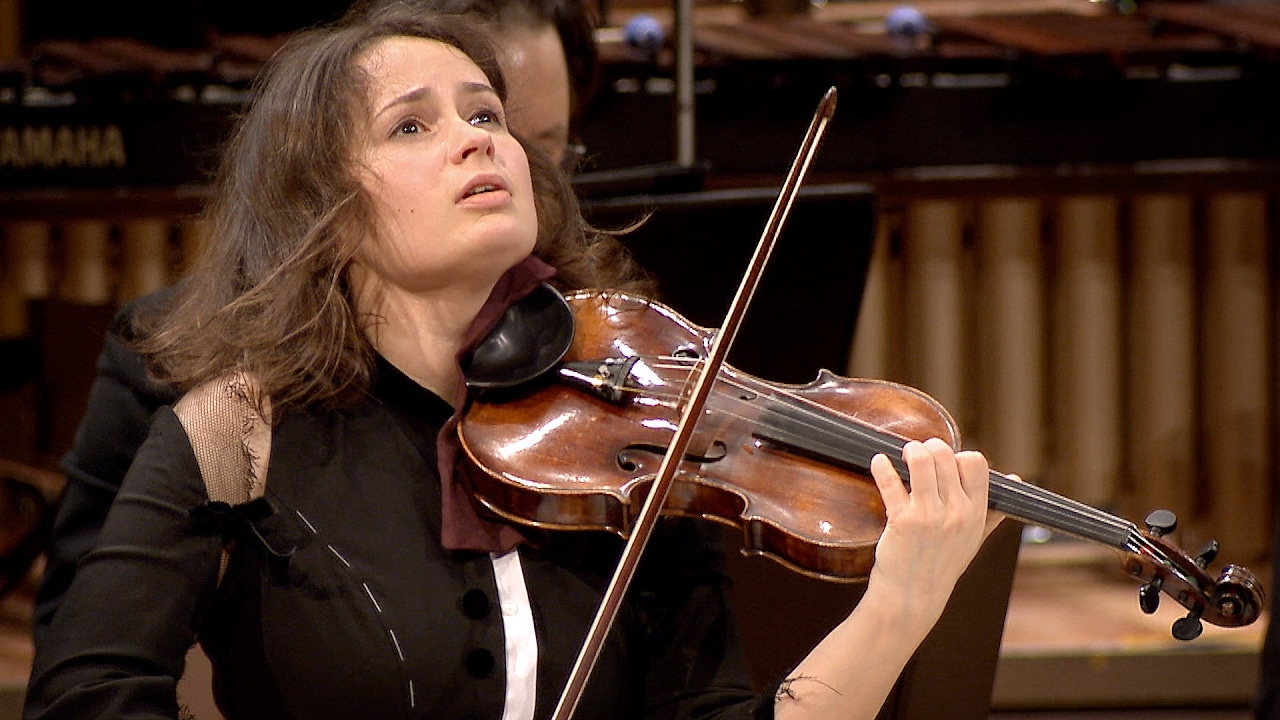
Patricia herself is only 41 – she has a 13 year old daughter, and a Swiss husband who is 77 – a retired neurologist. They live in Bern, and her husband cares for their daughter while Patricia is (increasing) away on tour. This, in some way, helped me to understand her better. Her husband is a noted author, and looks like a wise patrician. I imagine their conversations are complex, serious – and that she must have, even in her 20’s, been able to hold her own with her older husband and the world that they inhabit. She has a strength of character about her – a calmness and timelessness – a universal perspective. We spoke about her daughter and husband – she would often come to the orchestra green room to chat. She explained how, that morning, she had been FaceTiming with her daughter, a talented painter, and had seen the work-in-progress – a self-portrait. It showed half a head, the back disintegrated into the imaginary world and jumble of thoughts and images tumbling out which were the inner part of herself. Patricia chuckled and said “that is soooo my daughter!”
I can tell you, right now, that she is absolutely authentic. She is passionate, detailed, spontaneous and informed historically. Her technique is beyond reproach – left and right hands which can and do everything. This kind of technique can only be had by extremely disciplined and consistent work, starting from a young age. Lots and lots of work, and sacrifice. It is so natural, flawless, and like her daughter’s painting, you can see the imaginary world flow out of her. She reads letters from Robert and Clara to the orchestra, Robert’s doctor’s diagnosis, reports from the World Climate talks, we sing our parts, she talks about the multiple meanings of farewell – her farewell from her 3 year tenure with the SPCO, Robert’s farewell to Clara, humanities’ farewell to the the planet. As she is rehearsing, she spontaneously adds fermatas, cadenzas and solos, dramatic timings and intangible dynamics. And this is with Haydn. She seems to blatantly ignore, disregard, or discount the structure of a piece, the lengths of phrases and what we consider to be normal dynamic parameters. But it works – it really helped me to be able to be with her for the entire process. I could see how she thought. How her mind would wander to a color which is so far removed from what would be considered acceptable in any musical circles I am aware of, but it was always true to her vision, her imagining of what the music was saying to her. It was strong and clear. Easily the clearest musical vision I have ever witnessed.
She is a hard worker. She would always be coming to the orchestra room to check a detail with someone – she knows everyone by name. We had an intonation sectional in her room – just the 4 firsts and her – which ended only 6 minutes before the concert started (with the impossibly difficult Mendelssohn Double concerto, which she and her partner Polina Leschenko, played stunningly). She was never done working, imagining. She asked about my life, my next steps, and offered these words, “you will find your path – you must never play a note if your heart is not sure….”
I have witnessed a true musical genius. If you, like me, had or have viewed her with skepticism at some point, listen to these recordings. Listen to her parents. Remove expectations, wipe away your experiences and training, and you, too, might be able to enter her surreal, fragile and powerful world.
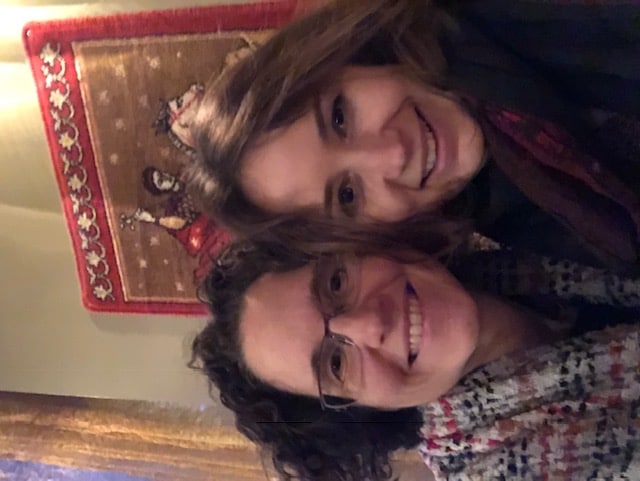


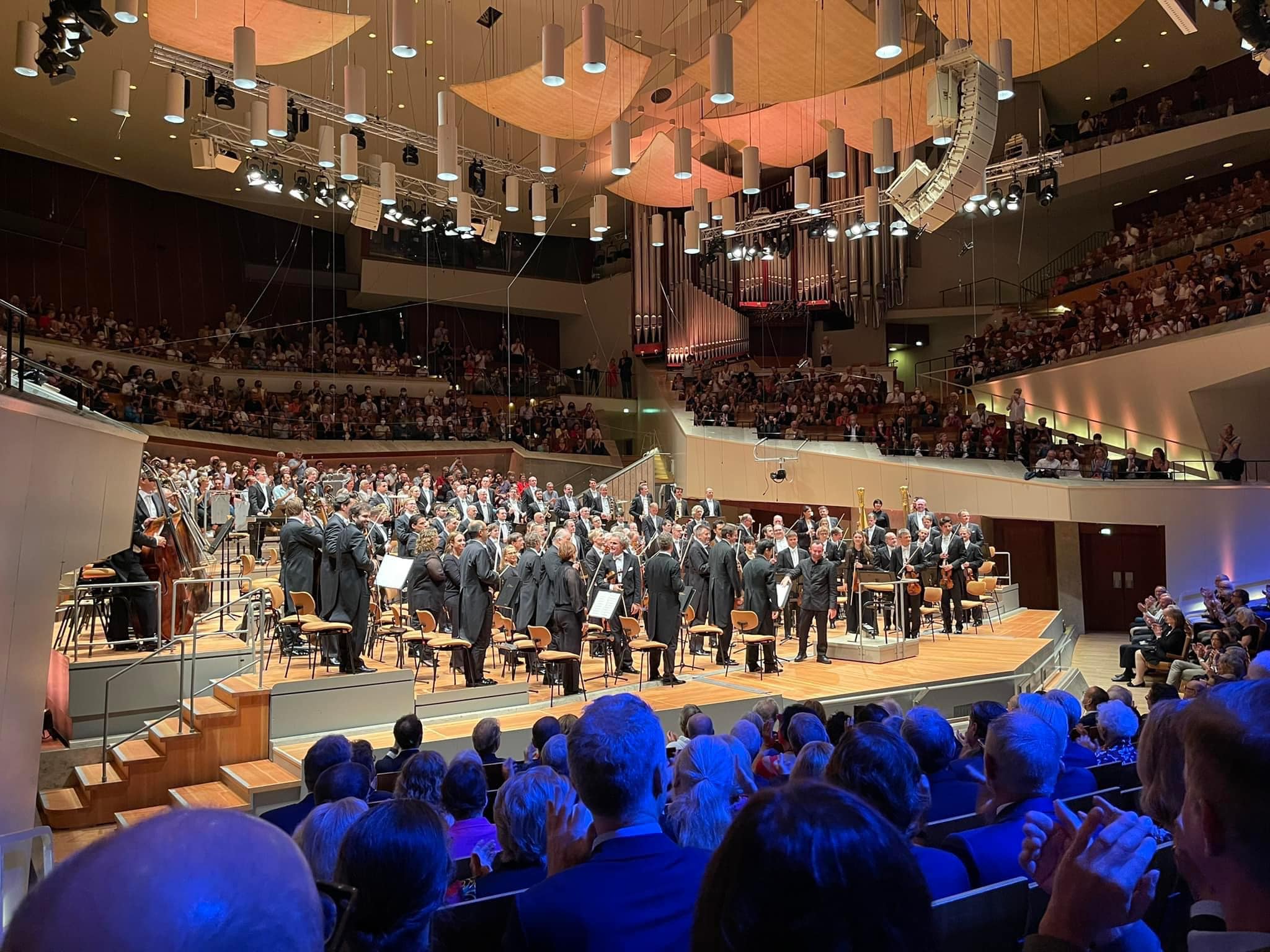
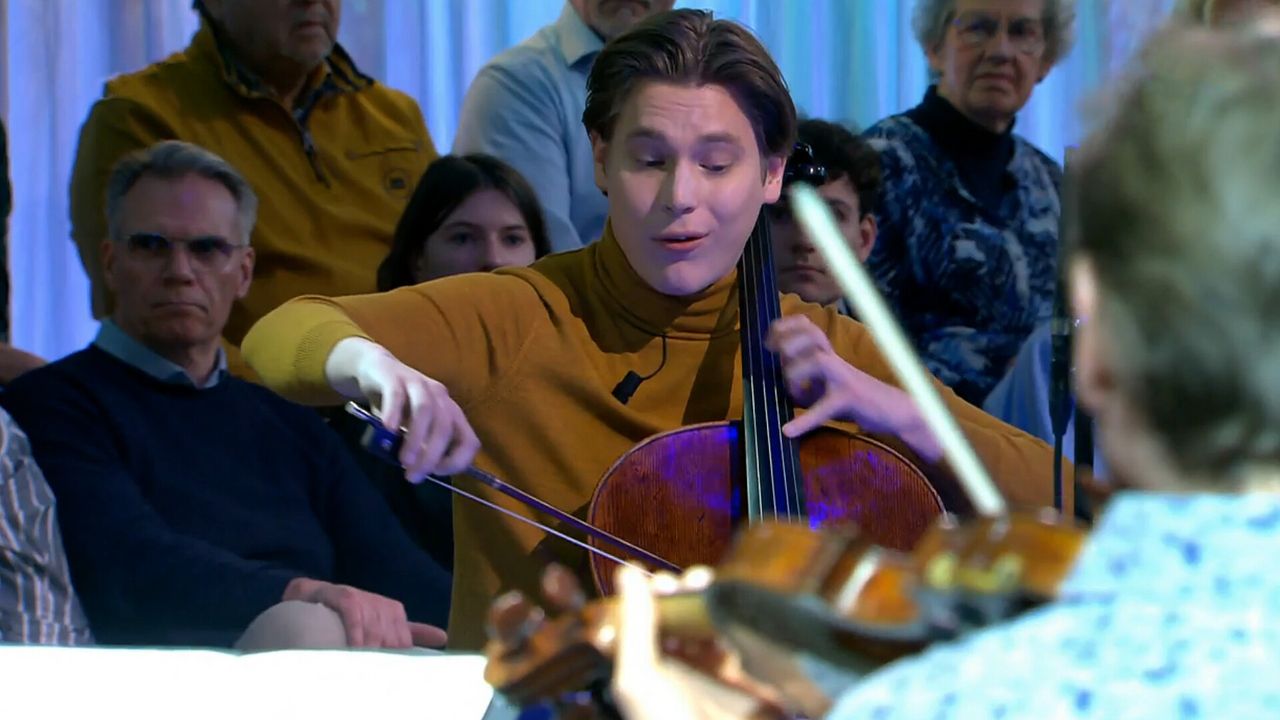

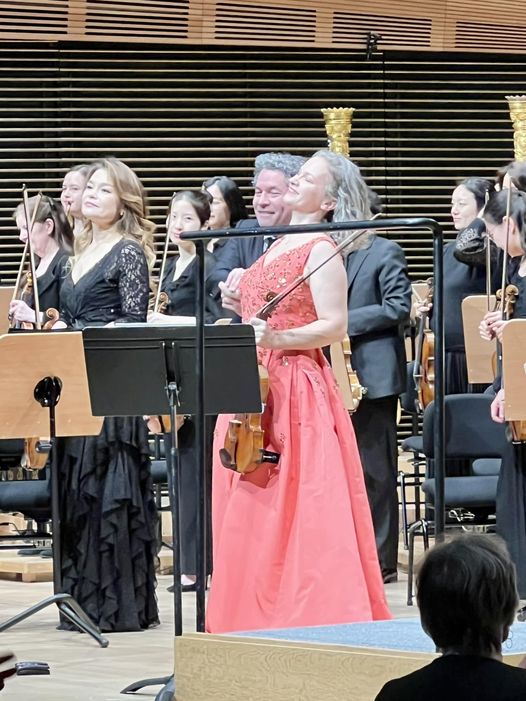
She might be a hard worker as well as an accomplished violinist but I find myself unable to enjoy the bad taste of her Tchaikovsky recording…
Her essay about the Tschaikovsky-concerto explains some of her choices: https://patriciakopatchinskaja.com/texts-TCHAIKOVSKY-patkop.html .
Besides their recording used gut strings and period wind instruments, which changes the sonics.
I’ve said this before, but her rationale is silly.
“However the influential Viennese critic Eduard Hanslick commented that this concerto “gives raise to the horrible idea that music can exist which stinks to the ear”. Hanslick also wrote that “the violin was not played, but beaten black and blue”, as well as labeling the last movement “odorously Russian” reminding of “the brutal and sad hilarity of a Russian parish fair“ full of “ugly and base faces“ and “raw curses“.
The aim of an authentic interpretation should of course be to recreate some of these first impressions.”
So essentially, her approach is to find the worst contemporary review she could, and play as horribly as she can so that her performance sounds as bad as the review said. And of course this must be “authentic” because her performances match the description of some acerbic critic. How superficial and insecure you could be as an artist to base your interpretations on the words of critics? Not to mention this is completely contradictory to her past actions: instead of getting over the bad reviews of her performances she would put them on her website and refute and shame the critics. So on the one hand, critics are clueless when it comes to her own performances, while on the other hand, they dictate how a work should be “authentically” performed. Sorry, but this does not seem to be someone with a “strong and clear” vision. Her contradictory choices suggest to me that she does not have strong artistic principles, but is instead playing the image game: she is totally “authentic”, even though her justification for her horrible performances is the words of a mere critic, while at the same time she is “uncompromising” to her own critics, because if they disagree they must be too conservative, too bourgeois, and too comfortable with themselves.
If I recall correctly, she took the same approach for the Kreutzer sonata. One contemporary critic described the piece as “aesthetic or artistic terrorism”, and apparently that gives her license to disregard any stylistic considerations and play it as hysterically as possible. Don’t like it as an audience member? Too bad, her performance is actually “authentic”, because it sounds just as bad as Beethoven’s critics claimed!
Hello hsy, I actually managed Kopatchinskajas website in the trashbin times under her supervision. Therefore I am in a position to point out that in this trashbin section there were never any comments on questions of opinion or taste, but only about facts. E.g. if a review mentioned a piece that had not been played (such things happen!). But most frequently it was about Beethoven: Again and again she was criticised for not adhering to Beethovens printed text in the concerto, and then one had to say that the variants played were from Beethovens own hand in his manuscript and that the eminent specialist Prof.Robin Stowell had encouraged her to use them, because nobody knows who had prepared the printed text, which happens to just use the versions most easy to play. Similarly she was criticised for “her” impossible cadenzas, and one had then to say that these were Beethovens own cadenzas from the piano transcription and put back on the violin (as done before by Schneiderhan and others). Last she was also criticised for her pianissimi, which are in fact in the manuscript, or for her fast tempi, and then one had to say that these were always based on Beethovens pupil Cerny’s metronome marks and the available early recordings like those of Hubermann.
While refuting such errors of fact there is absolutely no contradiction in using informations and opinions from historical reviews for a performance. Concerning the Kreutzer-sonata her interpretation is mostly based on the instructions of Cerny who insists that the first and the last movement have to be agitated throughout. If many violinists and the public have forgotten such informations they are no less valuable.
This said I am always struck by the violence with which advocates of musical correctness try to quash any attempt to life and creativity in art.
“But most frequently it was about Beethoven:”
Do you expect us to take your word for it?
http://web.archive.org/web/20160806102643/http://patriciakopatchinskaja.com/trashbin-patkop.html
I don’t see how you can justify the statement.
The page was actually worse than I remembered; she indulged quite a bit in putting down her fellow female violinists as being basically “brainless dolls” who play without thinking (apparently in her opinion this is not a problem with male violinists):
“Comme alternative je peux vivement recommander la multitude des filles bien élevées, bien coiffées et souvent mises en scène de manière très séduisante qui jouent le violon parfaitement, sans aucune recherche, réflexion ou surprise.”
And for a different review:
“I therefore strongly advise her to avoid me and limit herself to the many available glossy violin-girlies, which will deliver just what she expects.”
As for the Kreutzer sonata, you said “her interpretation is mostly based on the instructions of Cerny who insists that the first and the last movement have to be agitated throughout”. Let’s not pretend she is the only one who read Czerny and played these movements “agitated throughout”. They can do it without sounding like crap too.
Finally, I’m no “advocate of musical correctness”; please do not put words in my mouth. However, feel free to use this strawman argument and false accusation as a shield against any negative reactions towards her playing, as she and her team has been doing for years.
Thank you for reviving our memory, I feared that this was lost. Still exhilarating. Incidentally the majority of the bad reviews are just as is and without comment. And if I perceive you as an advocate of musical correctness, and an agressive one, it is an opinion I am entitlet to, as you are to yours 🙂
I would not have thought that trash-talking your fellow female violinists in order to make yourself feel special would be an exhilarating experience. Kudos for her and her team for deriving such pleasure from activities like this.
I’m not surprised you would perceive me as an advocate of musical correctness, since her team and a lot of her fans evidently hold the opinion that if one does not like her the reason could only be that one is too bourgeois to appreciate what a free (!) and brave (!) soul PatKop is. But of course you are entitled to your opinion.
Trashbin manager: “This said I am always struck by the violence with which advocates of musical correctness try to quash any attempt to life and creativity in art.”
+1
Dumm? Hysterisch? Eindeutig ein Bildungsbürger! Sorry!
Dumm? Hysterisch?
Mit Sicherheit ein Bildungsbürger am Werk!
Sorry!
I agree with you. The Tchaikovsky recording you mention was hard to stomach. And I do not think she is being true to us.any big careers are made by artists just being different…bad boys or girls of music, if you will. There is a segment of the audience that loves that and some artists have built themselves and their careers on it. I find her distasteful and I find it for show and attention. Evidently it has worked.
Sie ist ein Genie! Habe schon immer gedacht.
Ihre Mutter sagt das Gleiche.
Sie irren! Ihr Vater. Sorry.
Hoffe, dass Feuer noch lange brennt ! Fröhliche Weihnachten!
It may have worked for the author, but it did not work for me; at least in a performance of the Beethoven Concerto so full of mugging and grimaces and deviations from any performing tradition that I know of, that a portion of the audience frequently giggled. I’d have enjoyed myself more if I’d gotten a ticket to the performance of a good stand-up comic.
Very interesting read as always with Anthea Kreston. Thank you !
I tried…..
==I even once played this concerto in a costume in honour and memory of Kotek.
It’s like the time Nigel Kennedy played Berg concerto in London dressed in a cape and with Dracula- like appearance. “Cos, it’s about death, init geezer? Respect”
Nige is surely a better player than PatKop and doesn’t need to do all that tomfoolery.
[Please delete my previous post where I messed up the copy/paste]
Apparently she played one concert with SPCO dressed in a skeleton one piece outfit. She actually ended the Haydn Farewell Symphony by putting on a gas mask, to signify the death of the planet. Each member of the orchestra left, and layed a red flower on the stage on their way out. It was crazy, but quite poignant and effective.
who wrote this text? and do you have the right to copy it?
Its patkops text, he has no permission.
thank you
I don’t think authenticity was ever a question with PatKop — I doubt she is the kind of person, or artist, who would ever bother with gimmicks, stratagems or calculations. One may or may not agree with her interpretations (I myself do not always agree) but she is undoubtedly one of the very few genuine artists of our time. There are many violinists today who can play their instrument at an incredibly high level but who, in the end, have not much to say as musicians. I’ve heard PatKop live in the Ligeti Concerto with the Staatskapelle in Berlin and it was a masterful, awe-inspiring experience that I doubt will easily be replicated. When someone has such a kind of personality, you cannot expect universal agreement in matters of interpretation. I think PatKop is to be commended for her artistic courage and integrity in the face of a culture which has become rather conventional and puritanical in its taste. I’d rather take a chance on a player who can bring something new to a piece and who can challenge my presuppositions, as opposed to someone who will just replicate what has been done time and time again. I also love the fact that she challenges the establishment by voluntary posting on her website the negative reviews she received — that in itself speaks volumes about what kind of person and artist she is.
You said it so well! Thank you
“She seems to blatantly ignore, disregard, or discount the structure of a piece, the lengths of phrases and what we consider to be normal dynamic parameters.“
It may seem that way yet my impression of Miss Kopatchinskaja’s artistry is that she is fluent in music, and she has the chops to play with spontaneity, just as musicians of the nineteenth century performed—before the recording industry.
Musicians today typically prepare a product and have it nicely planned, “realiable”, and executed with consistent exactness. No small task, but…
Having seen her perform more than a dozen times I have learned she plays not only to a hall but to an orchestra; I am sure if she enjoys a duet with a woodwind player in a concerto and that woodwind player is especially interesting, she will enjoy that and make the most of it, playing differently than with another partner. How many soloists are so inspired and inspiring at the same time? She has the ability to play not one way but whatever way she wants, in the moment of performance.
(is it worth mentioning, she has no links to a certain school?)
She is totally fresh. That is for certain. Three concerts in a row, and each progressing and changing….that was fun to play alongside.
The Kreston diary” commentary” on Kopatchinskaya may
be easily viewed as puff pop culture writing.Press all the
correct buttons and come off as an in depth serious
observer to the matter at hand.However one views the
player she certainly has found what works for her and
pleases her followers .When you strip away the histrionics
the player comes off erratic at best . She is a modest
talent that has found how to work the pop culture to
her advantage .Her cleverness is not in the music but
how she presents the music.
I wasn’t in awe of her technique. I wish I had half a pinky of her skill…..
I mean I was!!! Was in awe. Arghhhhh spell chack!!!
I haven’t heard much of her playing; what I have heard has been intriguing and certainly very individualistic.
She’s clearly not an interchangeable violinist like all those Dorothy Delay or Zakhar Bron prodigies who, while they certainly don’t sound the same, obviously belong to the same school of playing.
I don’t know if I’m a fan of her playing, but I am a huge fan of the fact that she’s out there causing trouble 🙂
Exactly my opinion, too Bruce. I was just so happy to see that it all came from intelligence and passion and creativity. It may not me my cup of tea, but I joined with her heart and soul. It certainly was quite an experience, and kudos to her for causing such passion – both for and against her.
Just some relative thoughts via the great Marcel Tabuteau:
“The ‘spirit’ is the last thing to put on the playing. You cannot work from the ‘spirit’ of the piece. It would be like trying to put a flower on canvas and starting with the perfume].”
“Don’t play as you feel—play as you think; when you play with your head, you are playing with your heart. The mind is what works and is reflected in the playing.“
“Music can be compared to a car: If it is out of gear, the car does not move; it just makes noise.”
Oh no….this I cannot agree with. The heart and mind must work together from the beginning – the heart guides the fingerings, bowings, choice of string. They simply must inform one another at all times. This statement made me very sad – we must take care of the heart at all times!
And I’m saddened to see that you are merely a victim of what is in trend and fashionable.
Your comment to Anthea saddens me, Doug – you appear to be a victim of your own presumption, ignorance, and condescension.
Following the Kreston train of thought one would not go to the likes of a Heifetz to study the art of
playing the violin but one would go to a cardiologist. …..the heart guides the fingerings ?!
Someone seems to have left the institutions
gates open……………..
AJ – what is your Instrument? A violinist will choose a darker string for certain things, or decide to stay in first position for a clear, nasal tone. We will also choose a different finger to create a different sound. The first doesn’t have a voluptuous vibrato, the second slides the best, and has the best clarity, and the third has a consistent, but slightly thinner vibrato than the second. We also choose bowings for emotional reasons. All fingerings and bowings are derived from a musical foundation. There really isn’t another way to do it, actually.
In response to A.Kreston whose ludicrous
comments on violin playing are either
game playing or woefully ignorant to
the art ,I suspect the latter.
1 ,The heart guides the fingerings ?????
2 Fingers do make sounds
3Fingers do not have a voluptuous vibrato or thinner vibrato
4 Vibrato of any type is an applied effect.
5The sound Ms. Kreston hears if she hears anything is made by the bow being
drawn across the strings,the sound being
determined on bow pressure and position of bow.
6 No form of bowing is chosen for emotional reasons unless of course
one is being taught by the same cardiologist whose heart guides the
fingerings .
One must understand the full context of Marcel’s concepts: he was teaching music to American kids who lacked the musical sensitivities and instinct he himself had from a musical childhood. Is it not the case that Marcel also said music shouldn’t be simplified into numbers and that he was regrettably associated with the system so named after him? He did much for windplaying but it is fascinating how little windplayers in Europe give to his “system”…
Hmm – I see. Perhaps it is just an Oboe thing? For strings, the color of string and choice of fingering and bowing is integral. For oboe – what are the choices? I don’t really know, actually. We should ask Alex Klein. I love his playing.
Last night I was at concert of Patricia Kopachinskaya and Polina Leschenko and it was superb. PK was so expressive in 20 century music program: Bartok, Poulenc, Enescu, Ravel, so organic, they captivate with every note. Polina L.’s fabulous pianist. What a master! I talk to both after concert-lovely ladies. I’m proud to be from music world of Kishinev, Moldova that brought such genius as Patricia.
They practically set the Phillips Collection Music Room on fire a couple of weeks ago.
Fantastisch!
Mondrian!?
Your piece basically says “Now I see where PK is coming from, and whether or not I like what she does in individual cases, I can respect it.” Thank you.
She is a genius
==We had an intonation sectional in her room
That’s interesting. I’ve always admired her razor-sharp intonation. Maybe she has perfect pitch and that ear-to-hand coordination never lets her down? Thanks for the report
Lots of comments above pro and con, but as always Anthea I enjoy and respect and admire your thought processes. Rather than let your existing impressions be dominant, you made an attempt to learn about her, what has influenced her music, and therefore why she performs and directs as she does. There is a good lesson in there for us, irrespective of whether PatKop is a great player or not. Thanks as always, and have a great Xmas. Marg
I don’t know her personally, so can only comment on the musician and persona I see and hear on stage.
I’m alternating between finding her deeply uninteresting or socially irritating, trying to look behind that superficial clownery she does as her usual stage performance.
I have that general impression, that if someone seems to be more invested into visuals, more into expressive dancing than being focused on sonics, while making music, that for that performer music making is more a substitute gratification than genuine need.
Witnessing her performances, I used to think she needs a hug by someone loving more than anything else.
What a great article, Norman.
Thanks, Laurie! Anthea really gets to the heart of the matter.